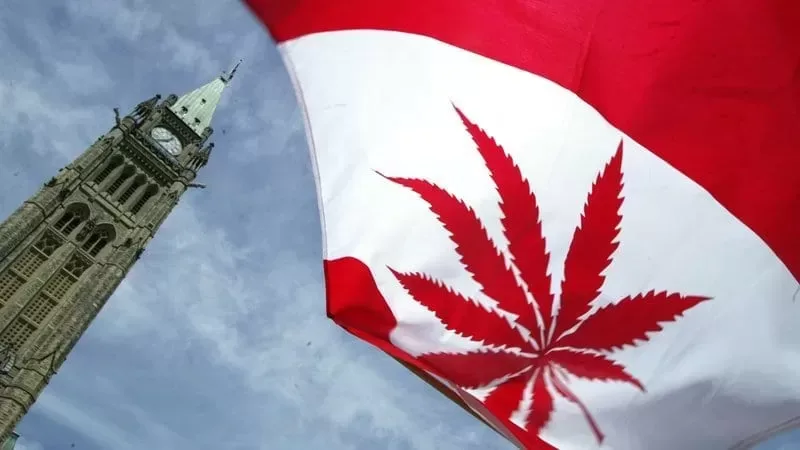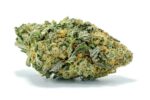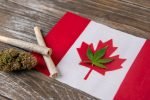The History of Canadian Cannabis:
In Celebration of the Legalization of Canadian Cannabis on December 17, 2018
Indigenous People of Canada
Cannabis use has been recorded for thousands of years among the various peoples of the world. Many of those cultures had a written language to record those traditions; however, North American Indigenous Peoples mostly had oral histories and traditions, which made evidence of cannabis use few and far between.
Many oral traditions and myths, however, did manage to survive the cultural purge and genocide of the Residential School System of Canada, and those oral traditions clearly included cannabis; especially among the First Nations Peoples. These applications included spirit rituals, healing rituals and in other special ceremonies and gatherings.
The 1800’s: The British Incentivises Hemp
The British began the legalization process of the cannabis plant (in what would be known as Canada), with hemp. Much like in the United States, the governing body in what would be known as
Farmer standing beside his crop
Canada, used hemp to stimulate industry.
In 1801, the Lieutenant Governor of Upper Canada actually handed out hemp seeds to Canadian farmers, hoping they would cultivate the useful and hardy plant.
By 1822, the provincial parliament of Upper Canada began to set aside money to incentivize hemp cultivation and purchase machinery for its processing.
The Early 1900’s: Canadian Marijuana Prohibition
In 1923 Canada become one of the first countries to enact anti-marijuana laws, criminalizing cannabis a full 14 years before the U.S. began its legislative quest against ‘reefer madness’. For reasons that continue to be mysterious to historians, Canadian legislators introduced the Narcotics Drug Act Amendment Bill, adding cannabis to the list of illegal drugs along with opium, cocaine, morphine, codeine and heroin. This passed with little discussion, and it wasn’t until 1932 that the first seizure of cannabis was made by Canadian law enforcement.
The 60’s and ‘70’s: Pot’s Popularity… and Convictions, are on the Rise
In the 1960’s, counterculture movements like the hippies and beatniks brought cannabis along with other psychedelic drugs into more popular use. But strong anti-cannabis laws meant that the increase in popularity was met with a drastic increase in arrests and convictions.
To give some idea of this shift in ideals; Canada saw only 25 convictions for cannabis in the 16-year span between 1930 and 1946, but in 1962 there were 20 convictions in that year alone. By 1968, the number of cannabis cases had skyrocketed to 2,300. By 1972 it had reached nearly 12,000 cannabis convictions.

By 1969 the Canadian government had caught on that cannabis was becoming increasingly popular and formed the Royal Commission of Inquiry in the Non-Medical Use of Drugs. Also known as the Le Dain Commission; this commission was formed specifically to investigate the non-medical uses of drugs and determine what role the government should play in their regulation.
The Commission’s final report included recommendations to scale back criminal penalties for drug users and focus more on treatment and medical management. Unfortunately, none of these suggestions were enacted.
Then, in the 1970’s, Canadian protests began. In 1971, Canadians in Vancouver held the Gastown Riot, the first ‘smoke-in’ to protest anti-cannabis laws. Also referred to as the ‘Battle of Maple Tree Square’, this peaceful protest was met with brutal force from Canadian police wearing riot gear and mounted on horseback.
Furthermore, the police cleared the area forcefully, beating the protesters with riot batons. Despite these strong efforts from protesters, and recommendations from the Le Dain Commission, Canada didn’t see much progress in the fight for Cannabis legalization until decades later.
The Early 2000’s: Legalization Blooms in Canada
In the year 2000, the new millennium finally brought cannabis reform to Canada, when the Ontario Court of Appeal ruled that cannabis prohibition was unconstitutional. This groundbreaking decision came after an appeal from an epileptic cannabis patient, Terrance Parker, who had been arrested several times for cannabis possession, cultivation and trafficking in 1996.
After this, the government worked to create the Marihuana for Medical Purposes Regulation or MMPR, which included provisions for a legal and commercially licensed distribution and production of cannabis.
Since then MMPR has been revised to allow for the production of cannabis oils and other forms beyond just the cannabis flower(as of 2015), and to allow patients to produce their own cannabis (as of 2016).
In 2017, the Canadian government took things to a new level, and proposed the Cannabis Act, which, passed Canadian Parliament December 19/2018. Canadian Prime Minister Justin Trudeau announced December 20/2018 that Cannabis would be legalized federally December 17th, 2018; making Canada the first G7 country to legalize marijuana.
New money is pouring into the Canadian cannabis industry through the stock market, and many fear that Big Pharma is making a play to take over this multi-billion dollar industry. These fears are not entirely unfounded as we begin to see Canadian cannabis companies pop up with ties to the competing industry.
Take Toronto-based cannabis company Emblem, for example. Emblem was started by John Stewart, the former president of the company responsible for bringing Oxycontin to the world. As more and more cannabis patients trade in their opiates and other pharmaceuticals for buds, Big Pharma has tried to keep prohibition going by donating to anti-pot groups. But as legalization continues to increase all over the world, more than one pharmaceutical company has opted to branch out into this lucrative industry, rather than fight it. Some worry that the big money from the pharmaceutical industry could easily taint and corrupt the budding cannabis market.














